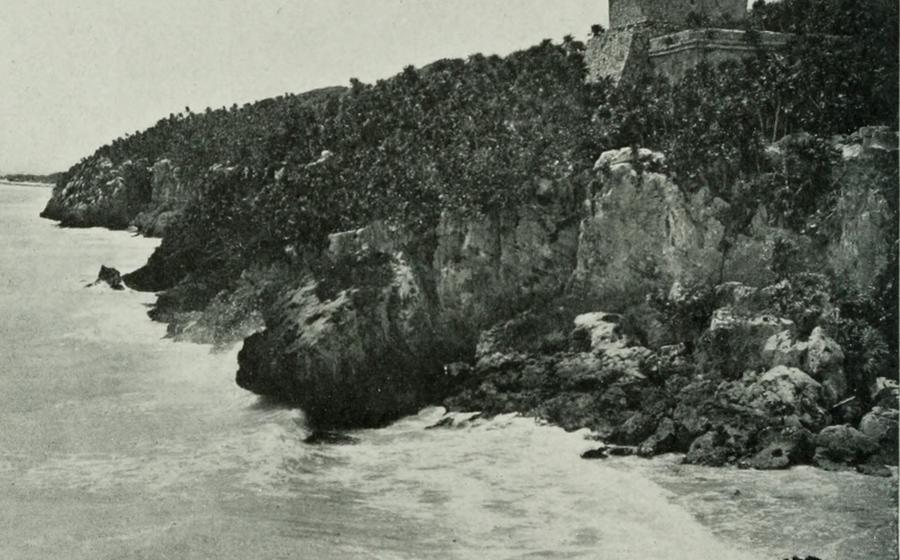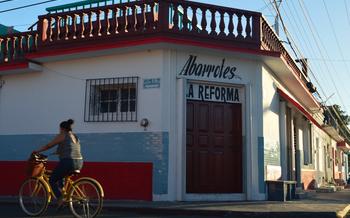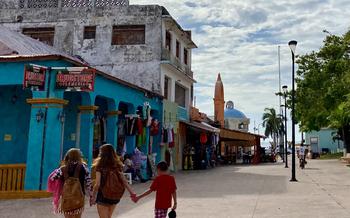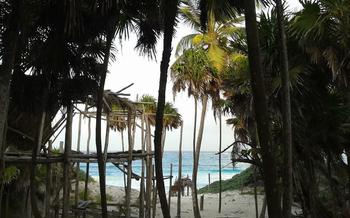
Cozumel Surfing
- Cozumel Surfing Overview
- Choosing the Right Surf Spot
- Renting Surf Equipment
- Hiring a Surf Instructor
- Surfing for Beginners
- Intermediate Surfing
- Techniques for Improving Your Surfing Skills
- How to Read Waves and Choose the Right Ones to Ride
- Tips for Surfing Different Types of Waves
- Conclusion
- Surfing Etiquette
- Best Time of Day to Surf
- Where to Stay in Cozumel
- What to Pack for a Surf Trip
- Surfing Tours and Packages
- Local Surf Culture
- Insider Tip: Uncovering a Hidden Gem for Surfers
Cozumel Surfing Overview
Cozumel, an idyllic island off the coast of Mexico, is a haven for surfers of all levels. Whether you're a seasoned pro or a complete novice, Cozumel offers an array of waves to suit your skill level. The island's surf culture has been thriving for decades, attracting surfers from around the world. Cozumel's unique wave conditions, created by the convergence of the Caribbean Sea and the Gulf of Mexico, provide a wide range of breaks, from gentle rollers to powerful barrels. The best time to visit Cozumel for surfing is during the winter months, from November to April, when the swells are at their peak. During this time, surfers can expect consistent waves and warm, sunny weather. Cozumel's surf breaks can be broadly categorized into three types: beach breaks, reef breaks, and point breaks. Beach breaks offer gentle waves that are ideal for beginners, while reef breaks provide more challenging waves for intermediate and advanced surfers. Point breaks, characterized by long, peeling waves, are a favorite among experienced surfers.
Choosing the Right Surf Spot
When selecting a surf spot in Cozumel, several factors should be considered. The skill level of the surfer is of utmost importance. Beginners should opt for spots with smaller waves and a sandy bottom, such as Playa San Francisco or Playa Palancar. Intermediate surfers can explore spots with slightly larger waves and a mix of sand and coral reefs, such as Playa Azul or Playa Chen Rio. Advanced surfers may venture to spots with bigger waves and challenging conditions, such as Playa Norte or Punta Sur.
The wind direction also plays a crucial role in determining the quality of the waves. For the best surfing conditions, choose a spot with offshore winds, which blow from the land towards the ocean. Offshore winds create clean and well-shaped waves. In Cozumel, the prevailing winds are from the east, so spots on the west side of the island, such as Playa San Francisco or Playa Palancar, are generally more reliable for surfing.
The tides can also affect the size and shape of the waves. Low tide can expose shallow coral reefs, creating hazards for surfers. It is best to surf at mid to high tide when the reefs are covered and the waves have more power and consistency.
Finally, consider the crowd factor. Some surf spots in Cozumel can get crowded, especially during peak season. If you prefer a more secluded experience, explore spots further away from the main tourist areas, such as Playa Chen Rio or Punta Sur.
Always remember to respect the local surf etiquette. Respect other surfers' right of way, do not drop in on others, and be aware of your surroundings.
Renting Surf Equipment
If you don't have your own surf gear, there are plenty of surf shops in Cozumel where you can rent everything you need. The cost of renting a surfboard for a day typically ranges from $20 to $30, while wetsuits cost around $10 to $You can also rent other accessories such as leashes, fins, and rash guards.
When choosing a surfboard to rent, it's important to consider your skill level and the type of waves you'll be surfing. If you're a beginner, you'll want to choose a longboard or a soft-top board, which are more stable and easier to ride. If you're an intermediate or advanced surfer, you can choose a shorter board that will allow you to maneuver more easily.
The staff at the surf shop can help you choose the right equipment for your needs. They can also give you tips on where to find the best waves and how to stay safe while surfing.
Hiring a Surf Instructor
If you're new to surfing or want to improve your skills, hiring a surf instructor is a great idea. A good instructor can help you learn the basics of surfing, improve your technique, and find the best surf spots for your skill level.
There are several reputable surf schools in Cozumel that offer lessons for all levels of surfers. When choosing a surf school, be sure to read reviews online and ask around for recommendations.
A typical surf lesson will start with a brief overview of the basics of surfing, including paddling, standing up, and catching waves. Your instructor will then take you out to the water and help you practice your skills.
During your lesson, your instructor will give you feedback on your technique and help you identify areas where you can improve. They will also help you find the best waves for your skill level and make sure you're having fun.
If you're serious about learning to surf, hiring a surf instructor is a great way to get started. A good instructor can help you progress quickly and safely, and they can also help you make the most of your time in Cozumel.
Surfing for Beginners
If you're new to surfing, Cozumel is an ideal place to learn. The waves are generally mellow and forgiving, and there are plenty of experienced instructors who can help you get started.
To start, you'll need to learn the basics of paddling, standing up, and catching waves. Your instructor will show you the proper techniques for each of these steps, and they'll also help you identify the best waves to ride. Once you've mastered the basics, you can start practicing on your own. Just remember to be patient and have fun!
Here are a few tips for beginner surfers:
- Start with a small surfboard. This will make it easier to paddle and stand up.
- Find a spot with small waves. This will give you a chance to practice your technique without getting overwhelmed.
- Be patient. It takes time to learn to surf. Don't get discouraged if you don't catch a wave right away.
- Have fun! Surfing is a great way to get exercise, enjoy the outdoors, and meet new people.
Intermediate Surfing
As your surfing skills progress, you'll naturally want to push yourself and learn new techniques to take your surfing to the next level. Intermediate surfers should focus on improving their wave reading skills, learning how to choose the right waves to ride, and practicing different types of maneuvers.
Techniques for Improving Your Surfing Skills
To improve as an intermediate surfer, you need to focus on developing your technique. This includes working on your paddling technique, your stance, and your balance. You should also practice popping up quickly and smoothly, and learn how to control your board in the water.
How to Read Waves and Choose the Right Ones to Ride
One of the most important skills for intermediate surfers is learning how to read waves. This means being able to identify the different parts of a wave, such as the peak, the shoulder, and the trough, and understanding how they affect the way the wave breaks. You should also learn how to choose the right waves to ride, based on your skill level and the conditions.
Tips for Surfing Different Types of Waves
Intermediate surfers should also practice surfing different types of waves. This includes learning how to surf beach breaks, point breaks, and reef breaks. Each type of wave has its own unique characteristics, and you need to be able to adapt your surfing style accordingly.
Conclusion
Intermediate surfing is all about pushing your limits and learning new techniques. By focusing on your technique, learning how to read waves, and practicing different types of maneuvers, you can take your surfing to the next level and start enjoying the waves like never before.
Surfing Etiquette
Surfing in Cozumel is a welcoming and friendly community, but there are a few rules and customs that you should be aware of to ensure a positive experience for everyone.
First and foremost, respect the locals. Cozumel's surf breaks are shared by both tourists and locals, so it's important to be respectful of their culture and traditions. This includes not dropping in on other surfers, not paddling out in front of someone who is already riding a wave, and not taking over a spot that someone else is clearly waiting for.
It's also important to be aware of your surroundings. This means paying attention to other surfers, boats, and other hazards in the water. Be sure to yield to surfers who have the right of way, and don't paddle or surf in areas that are clearly marked as off-limits.
Finally, be friendly and respectful to everyone you meet in the water. Surfing is a social sport, and it's always more fun when you're sharing the waves with others. Be sure to smile, say hello, and offer to help out if you see someone who is struggling.
Best Time of Day to Surf
The tides and wind play a significant role in determining the quality of surf conditions in Cozumel. The best time of day to surf is typically during the morning hours, as the winds are generally calmer, and the waves are more consistent. As the day progresses, the wind tends to pick up, which can make the waves choppier and less predictable.
If you're a beginner surfer, it's best to stick to surfing in the morning when the waves are smaller and more manageable. As you progress and become more experienced, you can start surfing later in the day when the waves are bigger and more challenging.
When it comes to tides, low tide is generally better for surfing than high tide. This is because low tide exposes more of the reef, creating more waves. However, some surf spots in Cozumel are better suited for high tide, so it's essential to do your research and find out which spots are best for the conditions you're looking for.
By understanding how the tides and wind affect surf conditions, you can plan your surf sessions accordingly and make the most of your time in the water.
Where to Stay in Cozumel
When choosing a place to stay in Cozumel, surfers have a few options to consider.
-
North end of the island: This area is home to some of the best surf breaks in Cozumel, including Playa Bonita and Playa Azul. It's also a great place to stay if you're looking for a lively nightlife scene.
-
South end of the island: This area is quieter and more relaxed than the north end, with a few good surf spots, such as Playa San Juan and Playa Palancar. It's a great choice for surfers looking to escape the crowds and enjoy a more peaceful vacation.
-
In town: If you're on a budget or want to be close to the shops and restaurants, staying in town is a good option. There are a few surf breaks near town, such as Playa Chen Rio and Playa San Miguel, but they can be crowded.
Regardless of where you choose to stay, it's important to book your accommodation in advance, especially if you're traveling during the peak season.
Here are some tips for finding the best deals on hotels and hostels in Cozumel:
-
Book your accommodation online in advance. You can often find better deals online than if you book when you arrive.
-
Consider staying in a hostel. Hostels are a great way to save money on accommodation, and they're a great place to meet other surfers.
-
Look for discounts and packages. Many hotels and hostels offer discounts for surfers and packages that include surf lessons and equipment rentals.
-
Ask around. Talk to other surfers or the staff at your hotel or hostel for recommendations on where to stay.
What to Pack for a Surf Trip
Packing for a surf trip to Cozumel requires careful consideration to ensure you have everything you need without overloading your luggage. Here are some essential items to bring:
Surfboard: If you own a surfboard, consider bringing it with you to save on rental costs. Choose a board that is suitable for your skill level and the types of waves you expect to encounter in Cozumel.
Wetsuit: Depending on the time of year and water temperature, a wetsuit may be necessary to stay warm and comfortable in the water. Choose a wetsuit that fits snugly and provides adequate coverage.
Sunscreen: The sun in Cozumel can be intense, so pack a high-SPF sunscreen to protect your skin from sunburn. Choose a waterproof sunscreen that won't wash off easily while you're surfing.
Rashguard: A rashguard can help protect your skin from chafing and sunburn, especially if you're prone to rashes. It can also provide some warmth in cooler water temperatures.
Surf Wax: Surf wax is essential for creating traction on your surfboard. Bring a few bars of wax that are suitable for the water temperature and type of waves you'll be surfing.
Fins: If your surfboard doesn't come with fins, you'll need to bring your own. Choose fins that are the right size and shape for your board and surfing style.
Leash: A leash is a safety device that attaches you to your surfboard, preventing it from getting lost if you fall off. Make sure your leash is the right length and in good condition.
First-Aid Kit: Pack a basic first-aid kit to treat minor cuts, scrapes, and other injuries that may occur while surfing.
Snacks and Water: Staying hydrated and energized is important for a successful surf trip. Pack plenty of snacks and water to keep your energy levels up throughout the day.
Camera: If you're a keen photographer, don't forget to pack your camera to capture your surfing adventures in Cozumel. A waterproof camera is ideal for taking photos and videos in the water.
Travel Documents: Make sure to pack all your essential travel documents, including your passport, visa (if required), and travel insurance information.
Cash and Credit Cards: While many places in Cozumel accept credit cards, it's always a good idea to have some cash on hand for small purchases and tips.
Surfing Tours and Packages
Booking a surf tour or package can be a great way to get the most out of your surfing trip to Cozumel. These packages typically include everything you need for a successful surf vacation, such as transportation to and from the airport, accommodations, surf lessons, and equipment rental.
When choosing a surf tour operator, it is important to do your research and read reviews from previous customers. You should also make sure that the operator is reputable and has a good safety record.
Once you have found a reputable tour operator, you can start to compare prices and packages. Be sure to ask about the following:
- The type of accommodations included
- The number of surf lessons included
- The type of surf equipment included
- The cost of additional services, such as food and beverages
Once you have found a tour or package that meets your needs and budget, you can book your trip and start planning your surfing adventure in Cozumel.
Tips for getting the most out of your surf trip:
- Book your trip well in advance, especially if you are traveling during peak season.
- Bring a variety of surfboards to accommodate different wave conditions.
- Pack light so that you can easily move around.
- Be prepared for the heat and humidity.
- Drink plenty of water to stay hydrated.
- Respect the local culture and customs.
- Have fun and enjoy the waves!
Local Surf Culture
Cozumel's surfing community is a vibrant and welcoming one, with a strong sense of camaraderie and respect for the ocean. Local surfers are always happy to share their knowledge and stoke with visitors, and they're always willing to help out a fellow surfer in need.
To truly immerse yourself in the local surf culture, take some time to chat with the locals, learn about their traditions, and share some waves with them. You'll quickly learn that surfing in Cozumel is more than just a sport - it's a way of life.
Here are a few tips for interacting with local surfers and learning about their culture:
- Be respectful and humble. Remember that you're a guest in their community, and that they've been surfing these waves long before you arrived.
- Ask questions and show a genuine interest in their culture. Locals are always happy to share their knowledge with people who are interested in learning.
- Be willing to share some waves. Don't just paddle out and take all the good waves for yourself. Let the locals have their share, and they'll be more likely to return the favor.
- Support local businesses. When you're in Cozumel, make sure to support the local surf shops, restaurants, and hotels. This helps to keep the local economy strong and ensures that the surf culture continues to thrive.
Insider Tip: Uncovering a Hidden Gem for Surfers
Beyond the renowned surf breaks that draw crowds to Cozumel, there lies a hidden gem known only to the local surfing community. This secret spot, nestled along the island's secluded shores, offers pristine waves that cater to surfers of all levels, from beginners seeking gentle rollers to experienced riders craving adrenaline-pumping challenges.
To reach this surfing paradise, adventurous souls must venture off the beaten path, navigating through dense jungle trails and rocky coastlines. The journey itself becomes a thrilling experience, building anticipation for the waves that await. Once you arrive at the hidden beach, you'll be greeted by a breathtaking panorama of turquoise waters, white-sand beaches, and lush vegetation.
The waves here are consistent and versatile, providing ideal conditions for both beginners and seasoned surfers. Gentle slopes and forgiving breaks make it an excellent spot for those just starting, while more experienced surfers can find thrilling challenges in the hollow barrels and powerful swells that form along the reef.
Surfing at this hidden gem is an immersive experience that allows you to connect with nature and immerse yourself in the local surf culture. With fewer crowds and a laid-back vibe, you'll have ample space to practice your skills, catch uninterrupted waves, and soak in the tranquility of this secluded paradise.
So, if you're seeking an authentic and uncrowded surfing experience, make sure to explore this hidden gem. Embrace the adventure, follow the path less traveled, and discover the true essence of Cozumel's surfing culture.









